Many dackets are convinced that if you plant a family bow, then the crop will get meekly, small. Therefore, they stubbornly continue to raise only the onions. Today we will give important recommendations how to grow a family bow on a garden in a garden in such a way that the bulbs get beautiful, larger, were kept for a long time. We introduce the peculiarities of this culture, its various varieties.
General Information on Family Luke
Family bow for a long time grown in the villages and villages. In each area, preference is given to its variety, considering it the most delicious, beautiful and yield. And this onions have a lot of names: the fortification, a bunch, "family", "nesting", "Culk", chalot. On Latin, his name sounds like "Allium Ascalonicum".
This is a kind of well-known on all the onions. From one bulb is formed "Nönzdyshko", consisting of several (on average from 3 to 10) bulbies. There are cases when 20 "residents" can be counted in one such "family". The weight of these bulbs is spilled - from 15 to 60 grams. In the form of bulbies are bissing, oblong, rounded, cuboid, elongated, egg-shaped. Scales can be painted in golden, reddish, purple, bronze color. On the cut of the bulb inside the white or pinkish-lilac shades. The greens of the family onion is well branching, "Pynes" thinner and tender than the onions-repka, covered with neat waxing, to taste less sharp, almost no dismounting and characteristic smell of mouth. Their height is from 30 to 50 centimeters. The greens of this onion is magnificent, cut off (or completely twit with a bowl) can already be in 2-3 weeks from the moment that I have been landing in a long-haired land. By the way, Luka has another positive distinctive feature: his feathers do not be gristened, they remain gentle and juicy throughout the season. The heads of the replist onion in the ground "sleep" for a long time (at least 90 days), but the heads of the "family" are able to mature for 50-80 days (it depends on the variety). Already in June, when the reserves of the onion bows are completed, it is possible when cooking culinary dishes to take the heads of the family bow. There is information that this species of Luke overtakes spinning on nutritional value.
Features of the cultivation of a family bow
"Sorokovinda" is not afraid of frosts, poorly susceptible to the girlfriend, so you can begin to plant a family bow in about the second decade of April (if the weather allows).
Long light days is the best time for the active growing vegetation of this bow, it is literally drinking melt water contained in the soil. Shalot develops perfectly at a temperature of 18-20 degrees. Seeds in the ground begin to germinate at temperatures from four degrees of heat.
Small planting material (less than two centimeters in diameter) is better to use for growing greenery, which can then be added to vinaigrette, different salads, soups, borshs, okroshka, vegetable stew, risotto, saltwood.
"Soroccing" is great for distortion in a pot on the windowsill or in greenhouses. But it is worth remembering that the family onion has a long period of rest, so it is possible to proceed to the surveillance with the arrival of January. Interesting observation - if in a pot to plant a big bulb, then she will give an abundance of luxurious feathers.
To land on the head, choose the bulbs of medium sizes (more than three centimeters in diameter). As a rule, they give a qualitative large crop.
Varieties of family bows
Varieties of this onion are now displayed. Experienced gardeners recommend nevertheless to give preference to local varieties, which are more adapted to the conditions of your region. Large bulbs manage to obtain when growing the following varieties:
- "Velikyustyugsky" - in fertile soil gives bulbs weighing 80 grams each! In the "nest" formed from 6 to 10 rounded heads. Their color is brownish red, and the taste is pretty sharp, crooked.
- "Knyazhich" - the "nest" consists of 8-10 oblong rounded bulbs, the weight of each approximately 75 grams. Outside the color of the "shirts" is pinkish-brownish, and on the cut, the flesh of pink color, pleasant to taste. It is capable of a long time stored in room conditions.
- "Old Believer" - spread from the Vologda region. The color of its outdoor scheels copper-pink, to taste internal scales sharp.
- "Prometheus" - is distinguished by increased yield, gives bulbs in 80 grams, they have the right form, outside the brown-red color, the taste is pleasant, soft.
- "White Queen" - in the "nest" of 10 rounded-elongated bulbs, the weight of each within 70 grams. White flesh, to taste this combination of sweet and sharp, outside the flakes of white-cream.
- "Waterwear" - a risper grade, the "nest" of which consists of five bulbs, in shape similar to a pitcher, their weight is an average of 70 grams. Outside the "dressing" brownish-yellow, and inside the flesh is sweet with a slight sharpness.
- Albik is also characterized by a good effect, the bulbs have a rounded-flat shape, "shirt" yellow, taste of the peninsula. Middle Weight - 30-50 grams. Feathers are a lot, they are tender, juicy.
- Grant is another grade that gives many subtle, gentle "pynes", the total weight of greenery within 200 grams. Its "family" consists of 5-11 bulbs, the form of which is rounded-flat, and the "dressing" is saturated with a yellow. Weight in the range of 50-60 grams. Flesh inside the peninsula.
- "Silge" - in the "nest" there are about 7 rounded bulbs, whose weight is 60-70 grams, and external scales have a yellow color. The taste can be described as very sharp.
- "Andreyka" - cross-elliptical bulbs, which have outdoor scales of dark brown, and the inner - pink, the peninsular taste. Weight approximately 26 grams.
- "Cascade" - an early variety, whose bulbs have 35 grams, a wide form. Dry scales are pinkish, and juicy - white with a slightly pinkish tint, sharp taste.
Now the varieties giving several lukov-giants in the "nest" (each weighing 100 grams). For example, the Kuban "Culk" (purple, red, yellow).
If you do not like sharp onions, then pay attention to the Salot Salot "Piendor". It is derived in France, is distinguished by raree. Gives oblong bulbs having a gentle sweet pulp of purple color. Great for salads. From one navdine of such a family bow can grow about 20 beautiful bulbies.
In the southern regions, good yields give varieties: "Kuban Yellow", "Kunak", "Russian purple", "Bargalinsky", "Rostov", "Belozerez-94", "Kushchev Kharkiv".
In the middle band, such grades of Shalot are managed: "Grasshopper", "Bonill", "Snowball", "Siberian yellow", "Sprint", "Garant", "Golden", "Masha", "fastening".
Landing a family bow
For the cultivation of the family bow at the dacha, select those areas that will warmly warm up the sun. The soil should be certainly fertile and loose - then you can count on a generous harvest. Sour and heavy soils for onions are not suitable. Pumpkin, zucchini, beans, peas, potatoes, rye - here are the best predecessors for the "Family". If last year the garden with onion was already satisfied at this place, then the "nesting" here can be planted only in three seasons. To improve the soil before landing with a poppinge for each square meter, add five kilograms of a humus, a glass of ash (can dolomite flour), two tablespoons of superphosphate. In the case of clay soil, it is necessary to add five kilograms of sand. Form a non-smoked bed, and make 2-3 deep grooves on it. Planting the planting material in a chess order. Between the bulbs belonging to the varieties giving large heads, leave a distance of 25-30 centimeters. For varieties with small heads, it is enough to leave a distance of 15-20 centimeters.
If you need a predominantly greens, then between the bulbs, leave a distance of 10-15 centimeters.
The depth of planting is 5-8 centimeters (the upper part of the lows should be covered with a layer of three centimeters), then the roots will quickly go into growth. If you place the planting material shallow, then it is possible to dry the root system.
If you have a lot of small bowls (from one to two centimeters in diameter), then you can make a centenary landing in the first days of October. Before frosting, the decelerations are rooted and swear well. In the spring you will get an early greens, or you can grow larger heads for the season.
Recommendations for the care of a family bow
In the first half of the vegetation of the planting of the family bow, it is necessary to periodically water.
If the kushuska is missing moisture in the ground, then it will complete the growing vegetation, the bulbs will not be able to fall asleep. Approximately three weeks before the alleged harvest period of watering stop. Be sure to remove the weeds in a timely manner. To delay moisture and pacify the weed herbs will help the layer of mulch.
On those beds. Which are designed to receive the heads of the family onion for the winter, cutting the feathers do not produce, otherwise it will negatively affect the crop. If you want to take greens from this ridge for cooking, then carefully pass the ground and unscrew some head from the middle of the "nests". Then there will be a free place about the heads left in the heads, they will still increase their mass.
The ripening of the bulbs in the norm is usually happening in the second half of July or early August. Symptoms indicating that it is possible to dig a harvest - withering, sewing 70% of the leaves, the appearance of dry scales on the bulbs, should be dry. If you redo the bulbs in the ground, that is, the risk that the "nest" will open on the heads, which under suitable conditions (wet environments) will begin a re-rooting, the duration of their storage in the winter will decrease. The optimal time for digging (pulling out) bulbs from the ground is dry sunny weather. Then you can successfully decompose your onions on the grid to dry in the sun, under the rays of which he hees (takes away) and disinfect. Pre-all the bulbs smooth off the ground, cut the roots. If the weather stands rainy, then drying should be carried out under a canopy, in an attic room or a barn for 10 days. When the feather looks like a snack, then cut it, leaving 10 centimeters so that it was more convenient to get "braids". The beginning and end of each "braid" must be fixed with ropes for strength. At first, these "braids" for some time to cold weather can be referred to in a gazebo or on the veranda, and then it is already necessary to define them in the house. Another way to store a family bow is in baskets or boxes (then leave the onion neck short).
If you have been growing your favorite sort of "Family" for many years, but notice that its yield decreases, some bulbs are ill, then try to restore the viability of your variety, resorting to seed reproduction. To get the seeds of the family bow in the late autumn, land in bed from six to ten major bulbs.
About pests and diseases
Sorry, the gardeners complain that their onions are yellowing "Pynes", someone from insects eat it. Who harms Luka? Colonies ofphids, Lukova Fly, much less often - onion hidden drive, leek mole, stewed nematode.
To combat troubles, first try the infraces of sharp peppers, yarrow herbs or wormwood. You can use the biopreparation, which is called "Verticillin".
To scare the onion flies, try to decompose the twigs cut off from wormwood, yarrow or pizzy. Once a week, from the beginning of the appearance of Pughshki in Luke until July 1, watering your "family" by salt solution (a large glass of salt is taken to the declined water bucket of water).
Tips for experienced dacnikov
- If you purchased the seeds of a family bow, then be sure to prepare them before planting to the ground. Take the tissue (or gauze) pouch, place the seeds there, and then put a bag in a saucer with water for soaking for 48 hours. Water periodically change in saucer. Then the seeds must be dried to be bulk. Now they can be sowed to the grooves, observing the distance of 8 centimeters. Between such furrows, leave 15 centimeters. From one seed should turn out from two to four small bowls. So here you will grow your bowls of the Sevkov family, which the next year can be used as a planting material.
- If you bought the navigation, then before landing, forcing it in warm water, where the crystals of manganese can be added. And you can make such a preliminary preparation of the planting material before shipping in bed:
- the dried bulbs hold 3 hours in salt solution (for two liters of water, take 60 grams of salt), then rinse the bulbs;
- send the bulbs for two hours in the dark solution of potassium permanganate, then rinse and dry.
- If you have little boarding material, you can try to land on halves (or even quarters). The bulbs with a diameter of 3 centimeters and weighing 30-40 grams are suitable. Each do harden a dry neck, cut the bottom to fresh roots. The donta of this onion closes the luxury "heel", here it is necessary to carefully cut, so that many roots appear on the bulb. Soak the prepared bulbs at night in the water. Immediately before planting in the ground, these bulbs cut on halves (or quarters). Make a cut along the bulbs using a sharp knife. Attention! This species of the flashes are unevenly located on the bottom, so the cutting is carried out so that approximately the same number of roots remain on each decene (half or quarter).
- For good bulbs, sitting on the days of decreasing moon. If you need greens, then for the landing, choose the days when the moon is growing.
- To prevent the extensive spreadsion of the onion flies, alternate the rows of onions and carrots.
- It is undesirable to bring fresh organic when growing onions, otherwise the greens will be massive, but the quality of the bulbs deteriorates, they will turn out with loose, unsuitable for winter storage.
- Want to get big lows? Then ignite the number of heads in the "Family", do not thicken the landing. The rationing is carried out by extinguishing the Earth and unscrew some heads. In the future, these remote heads with green feathers use in food, and the remaining "residents" in the nest will receive freedom and will be added in weight.
We hope that the knowledge of the family bay will help you grow gentle, vitamin greenery and strong, well-stored bulbs with therapeutic and dietary properties.

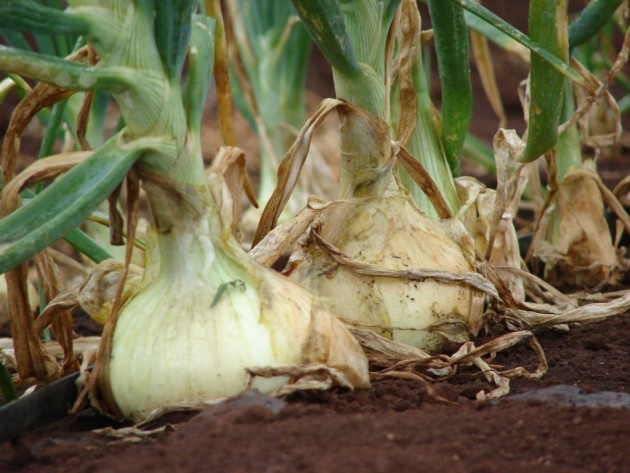
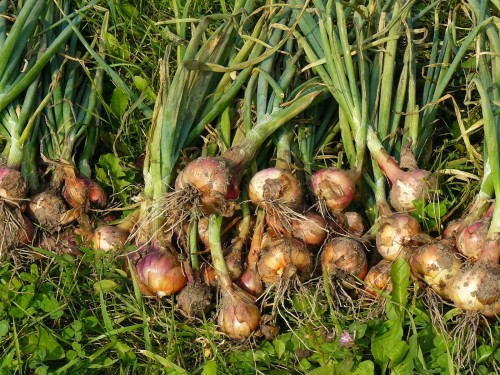
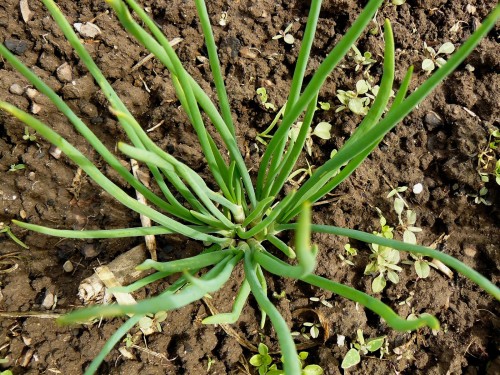
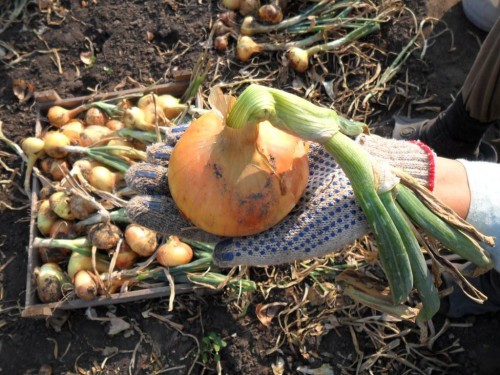

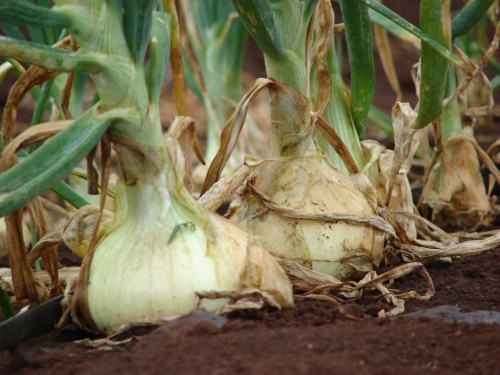
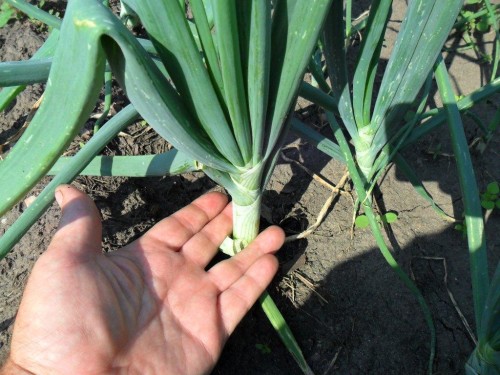
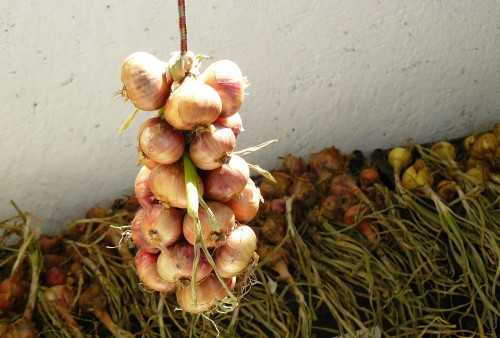












 Start a discussion ...
Start a discussion ...